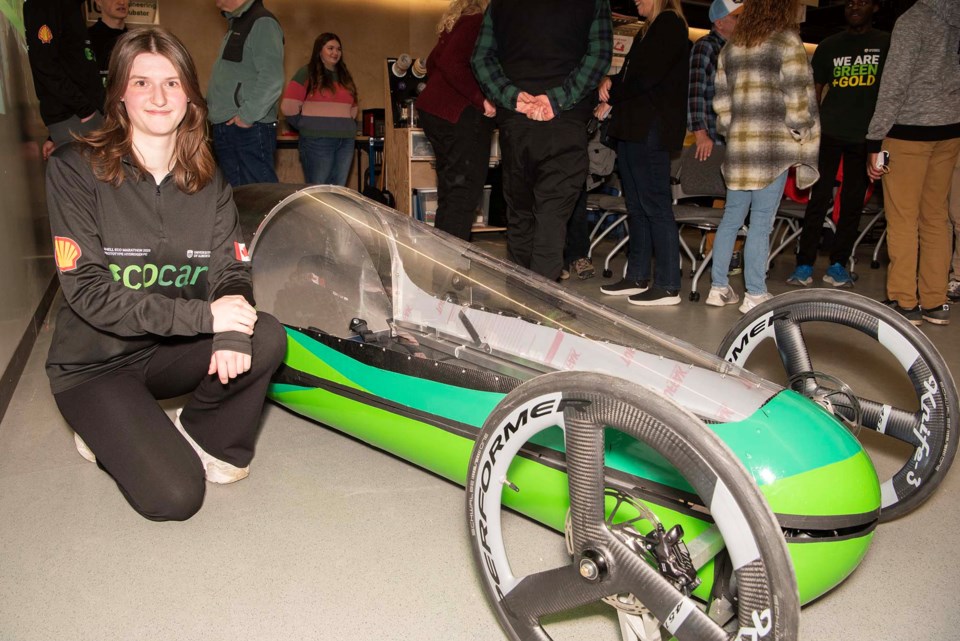Lasers, steel-slicing water jets, and hydrogen fuel cells aren’t typical tools for your everyday anthropologist.
But St. Albert resident Stella Simpson was no ordinary anthropologist. The third-year University of Alberta student and Paul Kane graduate was one of the 40-odd members of the U of A’s EcoCar team, which for the last year has been building a hydrogen-powered car to compete for big prizes at an international energy efficiency competition.
“EcoCar has been an incredible experience,” Simpson said — so much so that she was thinking about pursing an engineering degree.
“I never thought I’d be able to do something like this.”
Simpson was one of about 60 people at the U of A’s Elko Engineering Garage on March 14 for the unveiling of the 2025 EcoCar vehicle.
EcoCar is a student vehicle project group that designs ultra-efficient hydrogen-powered cars to compete in the Shell Eco-marathon — an international endurance race that challenges students to build the most energy-efficient vehicle possible.
Simpson said she joined the EcoCar team last year after hearing about it from a friend. She now serves as the team’s social media and outreach lead, managing its Instagram account and designing the vehicle’s vinyl overlay.
“I’m kind of the black sheep,” she joked, as she was the only non-engineer on the team.
Simpson was also a member of the team’s mechanical squad, spending up to 10 hours a day using 3D printers and lasers to produce parts for the project. She’s become the team’s go-to person for using the water-jet cutter, which can blast through five inches of metal using supersonic water streams.
“It’s a pretty scary machine,” she said, as it’s loud and dangerous, but she loves using it.
Speedy Sally
Simpson said she and the EcoCar team would head to the Indianapolis Motor Speedway (home of the Indianapolis 500) this April 2–6 for this year’s Eco-marathon. The U of A was competing in the hydrogen fuel cell category. Hydrogen is a potentially low-to-no-carbon energy source that could help cut planet-warming pollution from transportation.
The U of A placed first at last year’s Eco-marathon with a black tri-wheeler called Lucy that was shaped like a toucan’s bill, winning some $9,000, Simpson said. The team hoped to take first again this year with Sally, a green toucan-bill-shaped tri-wheeler that should be 30 per cent more efficient than Lucy.
Sally weighs 50 kg and has a top speed of 35 km/h, said Andrei Kourilov, who leads the EcoCar’s mechanical team. Sally is an optimized version of Lucy, having a similar shape but significantly less weight and better steering.
Team driver Essiyah Weis said the car’s cockpit (which can get pretty hot during a race) features a steering wheel, speedometer, various system status lights, and front and back brake pedals. Instead of a gas pedal (which took up too much space), the car has a button on the steering wheel that engages the engine as long as it’s held down.
Kourilov and Weis said the Eco-marathon has drivers complete four laps in 35 minutes, with first place going to whomever uses the least fuel in the process. There will be about 15 cars on the course at once. Drivers try and coast as much as possible to save fuel, and have to honk a horn if they want to pass each other.
Simpson said she loved the look of the car at Friday’s unveiling, which was the first time she got to see the finished vehicle.
“I’m really excited to compete now.”
Visit www.ualberta-ecocar.ca for details.




